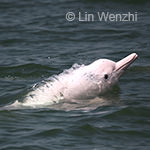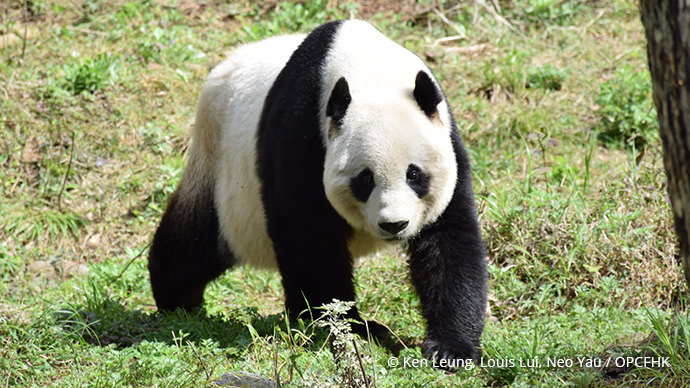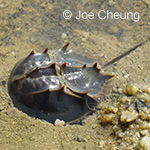

| Scientific Name: Ailuropoda melanoleuca |
| IUCN Conservation Status (Year Published): Vulnerable (2016) Endangered (1990, 1994, 1996 & 2008) |
| Estimated Wild population: About 1,864 (2014) |
| Life Span: 14-20 years (Wild) |
| Distribution: Endemic to China's six isolated mountain ranges in three provinces of Sichuan, Shaanxi and Gansu |
Giant panda, with a distinctive black and white coat, is the most iconic national treasure in China. The animal needs 4,300 to 5,500 kilocalories of food per day to survive, the equivalent of twenty bowls of rice or twenty hamburgers for humans. Their daily menu consists almost entirely of leaves, stems, and shoots of various bamboo species. Since bamboo contains very little nutritional value, pandas must eat 12 to 38kg of bamboos every day to meet their energy needs. Only about 1% of their diet is made up of other plants and meat.
Giant pandas are generally solitary that each adult has a well-defined home range. Encounters are rare outside the brief mating season in spring between March and May. Giant pandas reach sexual maturity at about 7.5 years old and they will attract their mate with scent-marking and bleating calls. Gestation takes about 95 to 160 days and wild pandas normally give birth to a single young. Tiny newborn giant pandas are pink in colour with short white hair, and weigh about 100g, which is about 1/900 the size of their mother. When they grow up, they can weigh up to about 100kg which is 1,000 times heavier than when they were born.
Giant panda cubs rely on its mother's care for a relatively long period after birth. Cubs acquire survival skills during this period, including walking and foraging through different seasons and landscapes. Giant panda leaves its mother at 3 years old and continue to roam until they find a suitable place to build their territories after gaining independence.

The giant panda is one of the better known and loved endangered species in the world and one of the most important symbols of wildlife conservation. They are also considered as an "umbrella species", which means that efforts to protect the species and its natural habitat will also protect the surrounding rich biodiversity – plants, landscapes and other species. For instance, the region where pandas live in Shaanxi is the home of a number of other endangered species, including the "endangered" golden snub-nosed monkey, the "near threatened" takin and the "critically endangered" crested ibis. All of them can benefit from the conservation measures to protect giant pandas.
| Estimated Wild Population: About 1,864 (2014) |
IUCN Conservation Status: Vulnerable
EX
EW
CR
EN
VU
NT
LC
DD
CITES: Appendix I
|

Habitats of giant pandas are highly fragmented and are diminishing due to human activities, making it difficult for them to migrate to other bamboo groves for feeding or mating. Threatened by fragmented habitats, their short mating periods further reduces their chances of survival.

In 1999, the Hong Kong Society of Panda Conservation (HKSPC) was established by Ocean Park for giant panda conservation. In 2005, Ocean Park Conservation Foundation and HKSPC merged to form today's Ocean Park Conservation Foundation, Hong Kong (OPCFHK). The giant panda has always been our focal species and we have funded dozens of giant panda conservation projects over the years. In 2012, the Foundation, forestry departments of Sichuan, Shannxi and Gansu signed a five-year framework agreement to strengthen giant panda conservation efforts by funding sciendivtific researches and conservation projects for giant pandas.

The earthquake of May 12, 2008 in Sichuan affected 83% of China's panda habitats, and over 500 km2 were completely destroyed (that is an area equivalent to 2,630 Victoria Parks in Hong Kong). The breeding centre in Wolong and some field stations were also destroyed, which has compromised patrolling and research activities. Roads and highways were likewise seriously damaged, making it harder to bring in essential supplies. The Foundation has established the Giant Panda Base Fund immediately after the incident, and has been supporting the rebuilding and other follow-up work.
 |
 |
|---|---|
|
Green Living! |
Join Friends of the Foundation |
 |
|
|
Funding Research and Conservation Project |


